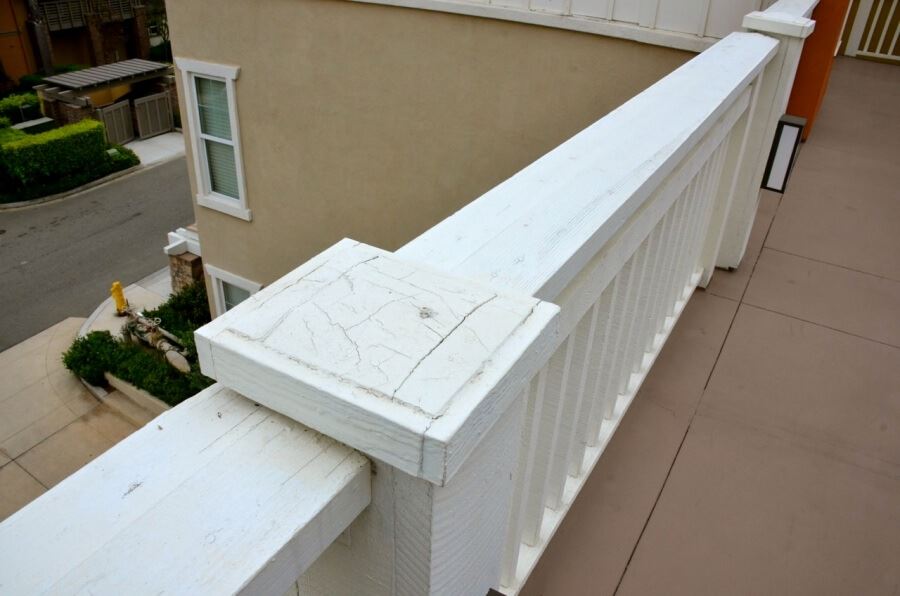
Most homeowners know the importance of a professionally painted exterior home and what a difference it can make with the overall look. A well-executed exterior paint service beautifies and adds character to your home. It is the first impression people often make when visiting your home; therefore, when the paint starts to fail, it can be very stressful and a little frustrating. The paint peeling on your wood trim is the last thing you see when you leave for work and the first thing you see when you get home at the end of the day. Let us help you change that and explain why your paint might be failing and provide solutions on how to fix it.
1. Poor Prep
Don’t skip prep! Paint preparation is a very crucial step in the process that can help to ensure quality and longevity of your exterior paint. While many homeowners may be quick to blame the paint for their failing exterior paint job, poor preparation can often be the culprit when investigating paint failures. However, there are situations when the paint itself could actually be the main reason. Cleaning your surfaces before painting is a good start with prep. Don’t rush the process by skipping this step. Use a pressure washer for best results. This will remove the dirt, oils and the pollution that builds up on your home’s exterior. It also will remove loose and flakey paint chips when done correctly. Sanding and scraping should be your next step after the surfaces have dried completely. Usually an exterior home will need some patching, caulking and priming. It’s important that you choose the right types of materials for these three items. You don’t want to skimp here and purchase the wrong type or low-cost items such as caulk. There are so many types of caulk and sealants to choose from that it can be overwhelming to make the right choice. A Vinyl Acrylic Latex caulk is a lower quality type and isn’t suitable for areas where joint movement is expected. Siliconized Acrylic Latex caulks are the most commonly used, but there are even better choices for exterior use, especially when more flexibility (50% -100% joint movement) is required. Polyurethane caulks are usually the more expensive caulks because of their ability to stick well to most surfaces and have low shrinkage.
2. Low Quality Paint
Unfortunately, when trying to save a couple bucks by purchasing the lower cost gallon of paint, you may actually end up spending more in the long run. Lower quality paint does not provide the same results and durability which the high quality paint guarantees. Higher quality paint also has fewer fillers and stronger pigments, further enhancing its long-term performance. Although it might look and feel the same, the higher quality paint provides a thicker and greater coverage that can withstand the harsh conditions exterior paint is forced to face. Fluctuating weather conditions may also affect the durability of your paint. What makes a good paint? Well, technically it’s the volume solids, the quality and amount of the titanium dioxide and the materials used to make the color (pigments). The paint with a lot of cheap fillers will make it a tempting low-cost option, but beware because this can be more expensive in the long run. A high-quality paint will have more paint left on the surface after it dries. This is called dry film thickness (DFT). When a paint is applied at let’s say 4 mils wet, it will dry to 2 to 2.5 mils, depending on the amount of solids in the paint you purchase. The higher the solids the less evaporation happens when it dries.
3. Temperature
We are blessed to have such amazing weather in Southern California. Even though we are reaping the benefits, our paint might not be enjoying it so much. In fact, it could be a reason as to why your paint is peeling and cracking. Fluctuating temperatures tend to cause wood to expand and contract, weakening the bonds between paint and the wooden surface. When exterior wood is exposed to direct sunlight all day or when we have summer high temperatures, the wood expands and cracks the paint film. Once the protective paint film cracks, it allows moisture to enter and get between the wood and the paint coating, causing paint to peel. Today’s high quality 100% acrylic water-based paints are designed to flex with wood that expands. After applying primer to all repaired areas, it’s important to apply two solid coats of paint that will have the best DFT. The thicker the coating you have on the wood, the more protection you have against paint film degradation.
